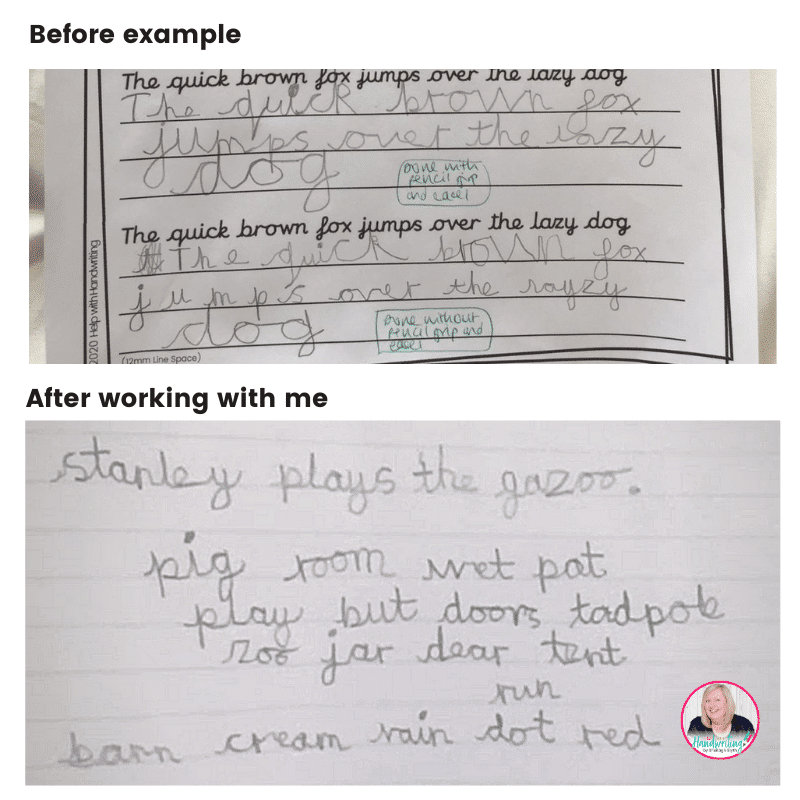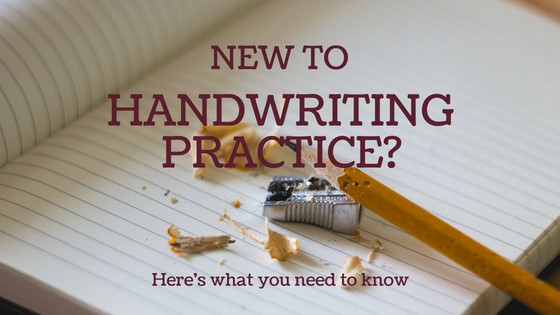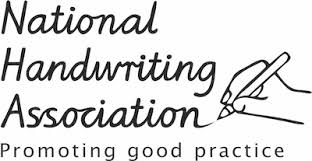Handwriting practice 5 to 6 years

Is your child reversing their letters?
Are you concerned that the cursive handwriting style is not right for your child?
Do you want to put the fun back into handwriting?
Between the ages of 5 to 6 years handwriting is about practice, practice, practice. However, what it should not be is boring, time consuming or repetitive.
In school your child is likely to be getting 15 minutes of handwriting practice a day. And for those that find handwriting easy this is enough time.
But what happens if your child needs more time?
How do they get this? Who is going to advise them? What sort of things should you, as their parent, be doing?
Sounding familiar? Do not worry.
This article is here to help you help your child. You’ll find some easy strategies that do not cost a penny.
At around 5 years, your child is probably still trying to understand the world around them.
When they ‘do’ handwriting, they are likely to be very motivated. Keen to keep going. And this is something that we should grasp with both hands. Their motivation to learn is infectious.
As a parent knowing how to make handwriting practice be fun and worthwhile is critical. What we REALLY want is to help them before any bad handwriting habits get formed.
Yes, there are some letter reversals that are common. These are the letters R, P, B and the number three. This is not something to be concerned about just yet. With practice your child will learn how to write their letters and numbers correctly.
The key is for children of this age to learn the ‘proper way’ to form letters and numbers.
The cursive (joined up) style may seem to have flicks and ticks. I appreciate it can be confusing, especially if you do not write in this style yourself. Schools use it because research says it’s one of the best ways to help children learn how to form the letters.

Let me tell you about Dylan

He is a happy boy, keen to go to school and has many friends. Dylan is a bit clumsy at times and unintentionally walks into things. He has already been flagged up by his school as someone who has potential coordination difficulties.
When writing Dylan started his letters in the middle of the page. He would then write from right to left. Some children who have coordination difficulties find it difficult to cross the centre of their body. This is why he was writing from the middle of the page to the edge.
For him, making the small motor movements needed to write was exceptionally tricky. Dylan had to concentrate a lot on where he positioned his pencil when writing letters. Together we practised writing about the Minions and learning about science facts.
Amongst other things we adopted the technique of the green and red dots (see below). This has significantly helped him. Dylan is now able to concentrate on how he is writing, rather than where on the page he needs to start.
Seeking reassurance if our courses are the right fit for your child? Don’t hesitate to reach out to us here!
Here’s how to encourage handwriting practice 5 to 6 years
Sitting upright
Being able to sit at a desk without slouching or leaning on the table is important. It is just as crucial as practising how to write letters. If we sit without our feet flat on the floor our body is not stable. An unstable body means our arms cannot control small movements with accuracy. When we place a pencil in our hands we require a lot of body control to move this pencil. Do check whether your child’s feet can reach the floor when they are writing or drawing.
Start and stop
When writing any letter, it is important to help your child know where to start and stop. This can be especially confusing with the cursive (joined up) style. Often a dot will help indicate a starting point and an ‘x’ as an end point.
Left right
There are some children who find it difficult to know where to start writing on the page. At school they may be used to a plain piece of paper to write on. This does not help your child to know in what direction to write in. To help them put a green dot in the top left-hand corner of the page. And put a red dot in the top right-hand corner. This simple visual reminder works a treat.
Tick-tock
Children at this age need time to practice their handwriting. This can be done in a number of different ways. Handwriting must be fun and entertaining. Otherwise we risk losing their motivation. Handwriting practice does not always have to be writing letters of the alphabet. Mazes and drawing handwriting patterns are great to do too.
Building bricks
You can use Lego bricks to help children notice the different lengths and sizes of letters.
Mistakes (what NOT to do when doing handwriting practice with your child)
Not looking
Keep a lookout on how your child is holding their pencil. Their hand is still developing. Unusual pencil grips are often seen. The aim is for a three fingered tripod pencil grip. The two grips to be really concerned about are a four fingered grip or a brush grip. This is where the four fingers wrap around the pencil shaft. Or the pencil is being held like a paint brush and being held the opposite end to the nib.
Buying off the shelf
Parents can be disappointed with handwriting worksheets bought off the internet. Many have said to me that they have felt they wasted their money. Not all handwriting workbooks are universal in terms of the font styles. If you wish to help your child with extra handwriting practice make sure that the style of writing matches what they are taught at school.
Forget play
Play develops hand skills and fine motor control. This is an important part of handwriting. Research has proven that play alone can develop handwriting. skills. So, if you think you may have a reluctant writer letting them play with small fiddly toys will help develop essential handwriting skills.
To summarise handwriting practice for 5 to 6 years is all about
Practice, practice, practice. But it is also about fun, fun, fun. At this stage your child should be very motivated to try. There are multiple ways in which they can develop handwriting skills. Handwriting practice ways does not have to involve writing of the same letter over and over. Skills can be developed during playtime.





